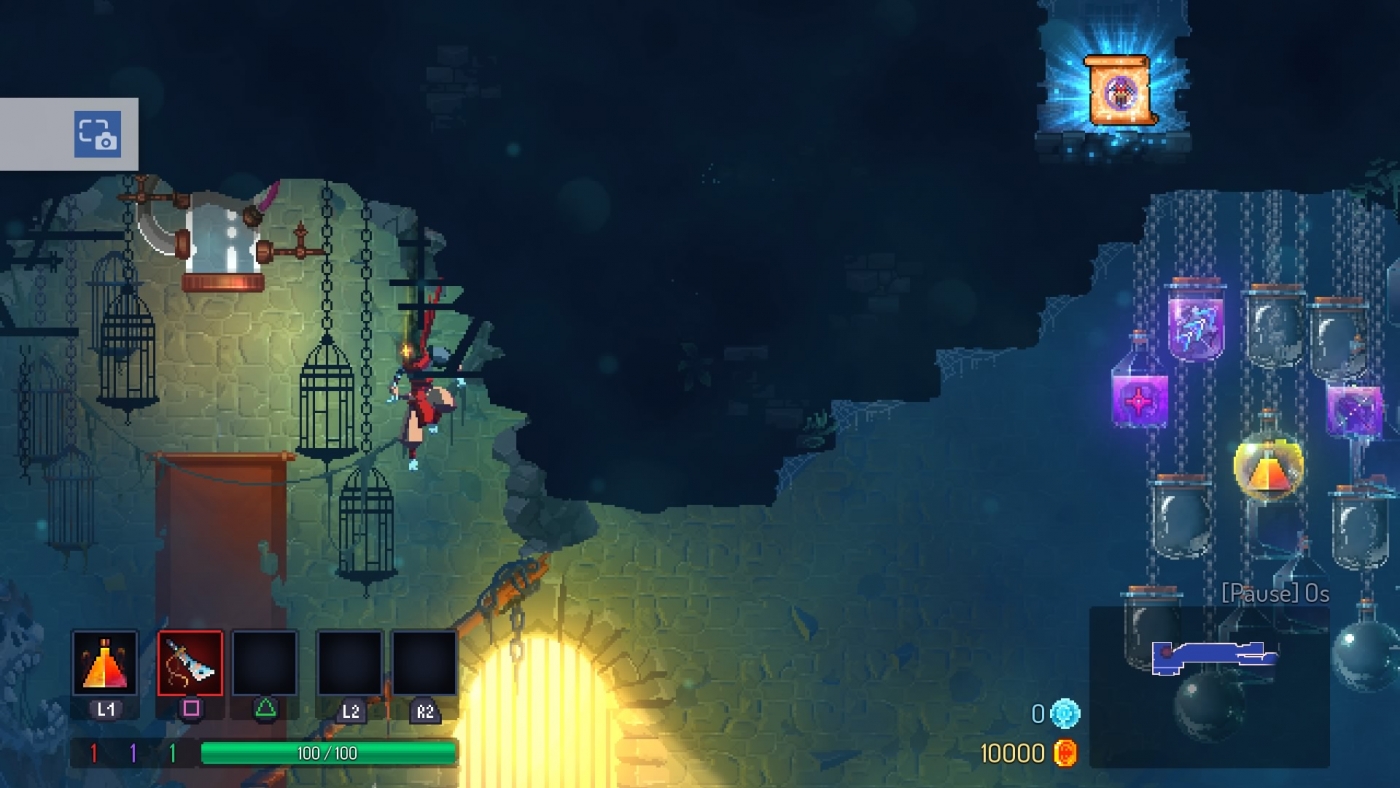

You can see the Dark Souls in Dead Cells in the flow and feel of its combat, which is based around dodging and adapting to enemies and boss fights that telegraph their attacks. Dead Cells’ levels riff on the classic “Metroidvania” structure - distinct, interconnected zones that have metal names like “Promenade of the Condemned.” While the zones share the same overall configuration every time you play, each time you die and start back in the Prisoners Cells the details of each area changes, including the locations of items, weapons, and secrets. From there, your task is to explore the labyrinthine castle, slaughter lots of zombies and monsters, and presumably escape.

At the start of your run, the green glob drops from the ceiling of a dank prison cell and slithers into a freshly decapitated soldier’s corpse, giving it the ability to run and fight. In Dead Cells, you control a slithering glob of necrotic goo. Far from derivative or pandering, Dead Cells takes some of today’s most iterated-upon genres and teaches a master class. It’s fast-paced, addictive, fun, and brutally challenging. Reducing Dead Cells to a matrix of influences, however apt, sells it short, though. Add a dollop of Dark Souls influence, and a pixelated, faux 16-bit presentation, and you have a very zeitgeist-friendly stew going. Looking for a single point of comparison is 2013 “rogue-lite” Rogue Legacy, which added a persistent, RPG-like progression to the dynamic repetition of modern Rogue-likes, such as The Binding of Issac and Spelunky. Developer Motion Twin describes the game, which is currently available through Steam Early Access, as “a roguelike Castlevania-inspired action-platformer.” That hodge-podge of callbacks puts it in good, if plentiful company.
#BLUEPRINTS DEAD CELLS FULL#
Head here to read our full, full review of Dead Cells.ĭead Cells makes no bones about what it is.

This is a hands-on of our first impressions.


 0 kommentar(er)
0 kommentar(er)
